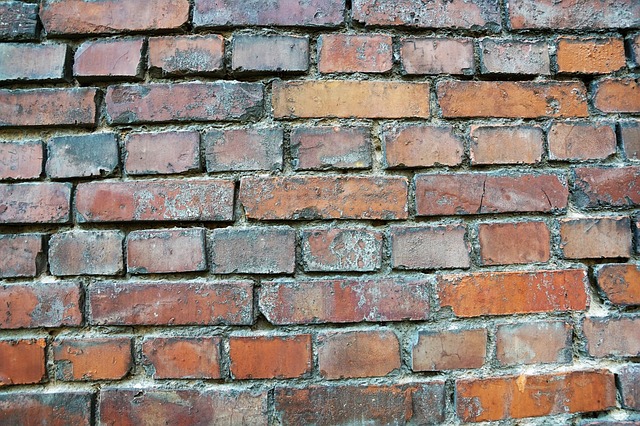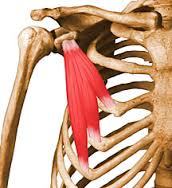
As we’ve previously discussed, there are many tools available for working on your connective tissue. To add to my previous post, another reason soft tools work better is because they’re pliable.
Why does this matter?
As Brooke Thomas writes in her Breaking Muscle article,
“…because they are pliable, you can work quite close to the bones because the rubber will nestle in around the protuberances rather than impinging them. This is good news since you will often get a more dramatic result working at attachment sites of muscles, which are, more often than not, on the bone.”
Imagine you wanted to paint this wall…

Like most walls (and like all body parts), this wall is not completely flat. What kind of tool would you use? (https://www.propertyspecialistsinc.com/) What would happen if you tried to paint the textured nooks and crannies of the brick wall with a crusty, hardened paint brush?

My guess is that there would be many unpainted spots, particularly in the smaller, angled crevices that the hardened bristled of the brush couldn’t bend to fit into.
This is also related to size of the object (which I will explain in a future series of articles), but the important thing to remember is that pliability is an advantage when it comes to self-massage because there is great benefit to nestling into the small spaces, in-between muscles, and at the attachment points where muscles connect to bones.
That being said, hard tools are not useless. There are cases where a great amount of mechanical force is required to create change in connective tissue, and a soft object is not always enough to achieve that amount of force. While some of this work can become safe as DIY bodywork with experience, it best to outsource it to an experienced professional, at least at first, until you know what you’re doing.











You really painted the picture well here! I always cringe a little bit when a patient tells me they’ve been using a Lacrosse ball! It’s like using a crusty, hardened paintbrush! Very descriptive and captured my attention, and you bring a good point that a harder tool as it’s advantages, but it’s always best to know which tool will work best for the type of job that needs to be done.
Your analogies have been on point! Also, excellent point on why pliability can be much more effective as a self-care tool.
Wonder what you think about using a spiky ball or balls of different shapes and sizes? I have definitely found that different places in the body require different levels of give from the ball depending on how much padding is in a particular location, the size of the muscle/bone/joint/tissue, and whether there has been any past trauma to an area.
I would like to read more about the Pec minor ball work, as shown from the picture. I know this small muscle is a big player for forward rounded shoulders and forward drawn head position.
I see only benefits to therapeutic balls YTU for our body. My planetary conscience, however, leaves me perplexed about the ecological footprint we leave with balls. In my opinion, the health of humans and the planet are more intimately connected than we think. But that … that’s another debate.
Thank you Max! I really appreciate the why, in this case, why pliable tools work better for working on connective tissue. While I completely agree that pliable tools–like YTU therapy balls– work so much better, it is great to understand and be able to articulate why I believe this. The imagery or analogy of the brick wall was also a great way to illustrate this. I also appreciate that you have acknowledged that in some cases harder tools may indeed be needed as well.
So glad I kept all my softened Yoga Tune Up Therapy balls for a gentle and embracing massage/release where it may otherwise hurt too much or cause me to winch and tense up. With the range of Therapy balls, an individual has lots of choice, just like different paint brushes, to affect muscular relief. The wall is a great visual/ metaphor!!
In a culture that prides itself on pushing to the limit I think this is a brilliant perspective to share. It’s always hard to coach people back from edges that, in reality, aren’t serving them as much as softer or even just more strategic and well aligned approaches. The brick wall analogy is perfect – in looking at the brick wall it was plane as day that there are some areas that just wouldn’t be touched with a more firm tool. From a gal that loves the deep work – I tend to gravitate towards firmer tools so this is a helpful lesson for me to. Thanks!
Your image of the brick wall is very apt. It totally helped me to see what you were hinting act and i have felt in my body that you are right. There is something to be said for allowing the contours to be followed even if some part of us may think that the harder object that may give more intense sensations are more effective.
Love the use of analogy. I use the different size ytu balls, particularly the smaller size balls for the clavicle area and between the ribs.
I really enjoyed your description of the muscles being nestled up against the bone in certain places in the body, which in turn can create an deeper release and make the muscle more pliable to its surrounding structure.
thanks for offering a great visual component!
This was very interesting…i had always rolled the larger muscle groups but after reading this article I rolled and while rolling, moved my limbs in different directions, found different ways to place the balls and found new target areas to treat! Thank you!
Thanks for the insights, Max! Bodywork can be expensive, and it’s helpful to read this creative and visual piece.
Great insight- don’t just pay attention to the bricks but remember to care for the important spaces in between bricks. Thanks!
I’m rather new to the ytu therapy balls and I’m excited to know I can use them at connective joint and not just in the belly of the muscle. Often times you’re told to stay away from those areas due to them not needing to be loosened. That’s clearly not always the case. Thank you!
I am rather new to YTU initially shied away from the smaller balls since I imagined they would be to sharp but thank you for painting a clearer picture for me I will explore the benefits of nestling into the small spaces:)
I like the analogy of thinking of the type of brush to paint the textured nooks and crannies of a brick wall. I teach at place where the Tune Up balls have seen many bodies (i.e. super soft). One student is rallying to have the soft balls replaced with new hard ones. Those small balls are still great, just for different parts of the body. Will rally to keep the soft ones and still get some more!
Love your articles!
Yes…..I love that you point out to pay attention to the connections sites at the bones. The therapy balls work wonders for this!
Great Article!
Thank you for sharing your insights. I like your analogy of painting a wall. Taking the time to assess the situation and chosing the right tool for the job can ensure you are working safely and with integrity.
Thanks, Max for pointing to the pliability of the tools! Not all balls are created equal.
Great analogy! Such a wonderful way to explain why soft tools can be so helpful. Thank you for this!
Thanks, Max, for a really thoughtful blog piece. This is a lovely analogy which I will borrow, if you don’t mind, when explaining the difference in YTU balls and the other tools I have tried in my quest to release fascia:)
Thanks Max- i appreciate this because so many people i chat with about the benefit of “my” ball work they always come back w i use tennis balls or lacrosse balls. i know they’re not the same and now i can explain why these are sooo much better! how about safety for osteoporosis?